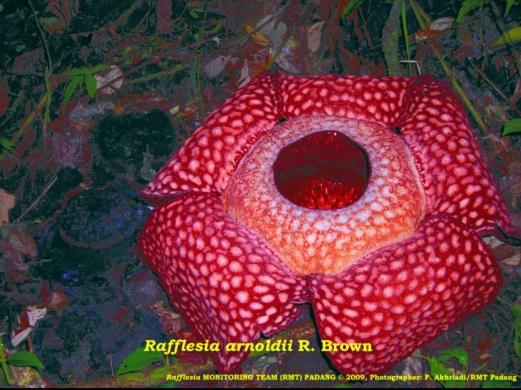Pitra Akhriadi
The aims of the project are:
1) assessing the conservation status of Rafflesia populations in West Sumatra,
2) monitoring the existence of Rafflesia species, and
3) proposing management plant for conservation of Rafflesia species.

Several sites of Rafflesia are reportedly exist in West Sumatra. The famous one is Batang Palupuh Nature Reserve for Rafflesia arnoldii R. Br. and Tahura Bung Hatta for R. gadutensis Meijer. Current observation indicated that both sites are not active since very few Raffesia blooming from these sites were observed for several of years. Several intermittent blooms were found outside these sites especially extremely rare and endemic R. gadutensis, one of the most of threatened Rafflesias in the world. These sites are in unprotected forest area has a potential risk to be disturbed in the near future. The same pressure is on R. hasseltii Suringar in the south of West Sumatra region.
The main problems faced by Rafflesia in West Sumatra are habitat fragmentation, land conversion, lack of understanding of conservation value of this species and unmanaged eco-tourism activities. This has given negative impact for the existence of this species in this region. Assessing the current status and the existence of the Rafflesia is urgently needed to improve our understanding and to conserve the species. The conservation effort of the species also gets less attention than their ecotourism aspect, although in many cases the damage of its population is triggered by the tourism activities. Considering this situation, basic research to gather these important data is urgently needed.
This proposed project will focus work on accessing habitat and population of Rafflesia in several sites that have been reported exists in West Sumatra. To achieve the aims of the project some Intensive fieldwork will be conducted at known Rafflesia sites and some of suspected locations from the previous works. In the existing Rafflesia site, the species, site status, elevation, forest type, and land status will compiled. Education and training will be conducted for locals in villages close to the sites and for the members of KCA-LH Rafflesia FMIPA UNAND as a potential pressure and working group for Rafflesia conservation activities. In the process we can identify potential threats and encourage participation of the local communities through education and social networking. Overall the project is hoped will improve our knowledge about biological and ecological aspect of Rafflesia and we sincere hope that this will give important contributions to the local people, stakeholders and government agencies in the area.